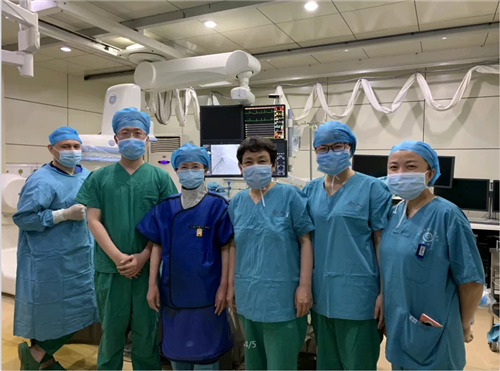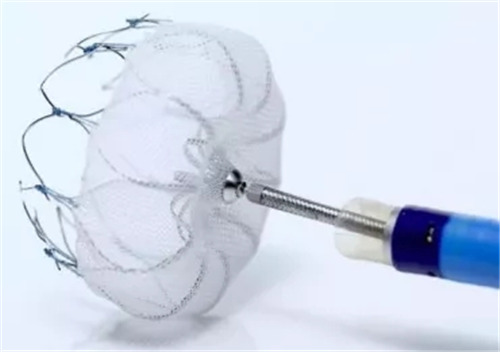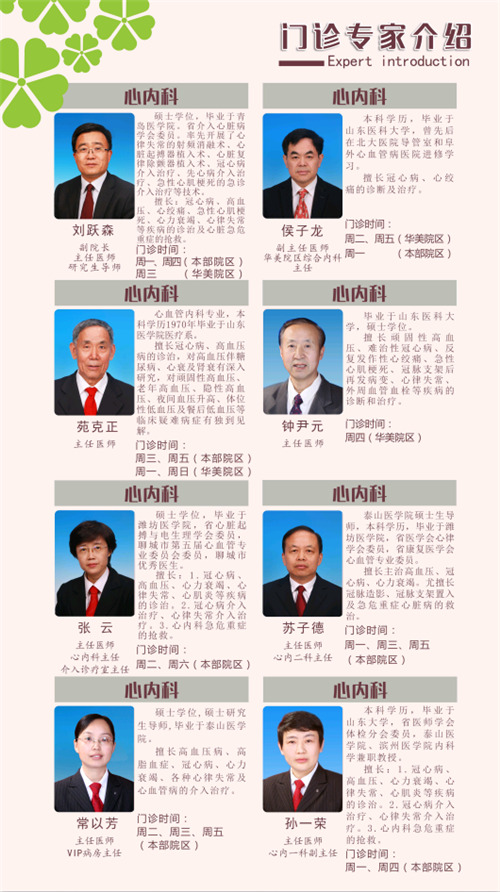- Date:2020-05-25
- Click:19001 Times
On May 23, 2020, the team of Department of Cardiology of Qilu Hospital, led by Director Zhang Yun, successfully completed the first case of left auricular occlusion, which filled the gap of this technology in our hospital. We would like to thank the team of Prof. Zhong Jingquan from Qilu Hospital, President Liu Yuesen, leaders at all levels of the hospital, leaders of the Medical Department and the Nursing Department, the Interventional Catheterization Laboratory, Cardiac Ultrasonography, Anesthesiology, Vascular Surgery, and Neurology, as well as the trust and cooperation of the patients and their families for the successful development of this technology.

Atrial fibrillation (AF) is one of the common arrhythmias in cardiology and increases with age. Currently, the number of atrial fibrillation patients in the country has exceeded 10 million, and it has become an epidemic cardiovascular disease in the 21st century. The main hazards of atrial fibrillation are causing stroke and vascular embolic disease, myocardial infarction, heart failure, cognitive decline and dementia, and renal function impairment.
Studies have shown that the risk of stroke in patients with atrial fibrillation is five times higher than that in the general population, and the combination of stroke in patients with atrial fibrillation is characterized by a high mortality rate, a high rate of disability, and a high rate of recurrence, making the prevention of stroke particularly important. In addition, in non-valvular atrial fibrillation, more than 90% of thrombosis is related to the left heart ear.
The current treatments for atrial fibrillation include drug therapy, radiofrequency ablation of atrial fibrillation, and left auricle blockade. In recent years, minimally invasive surgical left auricular occlusion has become a new trend in stroke prevention therapy for patients with AF. As an effective supplement to anticoagulation therapy, left ear blockade is highly effective and safe, greatly reducing the risk of stroke/embolism; and lowering cardiovascular mortality.The 2016 European Society of Cardiology (ESC) Guidelines for the Treatment of Atrial Fibrillation include left ear blockade as a therapeutic option for patients who are at high risk of stroke and who have contraindications to long-term oral anticoagulation therapy. China also developed relevant guidelines and issued an expert consensus in 2019.



This patient is an elderly male, 75 years old, with a history of atrial fibrillation for more than 10 years, combined with peripheral arterial occlusion and embolization. There was a past history of hypertension and type 2 diabetes mellitus. According to the embolism and bleeding risk score, the patient had high stroke and bleeding risk, and the patient still had lower extremity arterial embolism in the course of standardized oral anticoagulation with warfarin, and after repeated discussions in the department, it was decided to perform left auricular occlusion surgery, which was a permanent solution! Intraoperative imaging showed that the distal left auricle had a well-developed comb muscle, which could easily cause stagnation of blood flow and subsequent formation of thrombus, leading to stroke and various embolisms. During the operation, a 24mm-diameter Watchman left auricular occlusion umbrella was implanted to successfully seal the left auricular opening, effectively avoiding the risk of embolism caused by thrombus and greatly reducing the risk of stroke and other embolisms in this patient.

As one of the most influential hospitals in northwestern Shandong Province, our hospital has actively carried out various cardiac interventional techniques, and now the development of left auricular blockade has brought a blessing to patients with atrial fibrillation in Liaocheng who cannot tolerate long-term anticoagulation therapy. It also signifies that our hospital's cardiac interventional therapy has ascended to a new level and is at the leading level in China.

(Contributed by: Cardiology I, Xu Yingchun, Zhang Yun, Yan Qinghua)



 鲁ICP备11009722号-4
鲁ICP备11009722号-4 